Indoor Nutrient
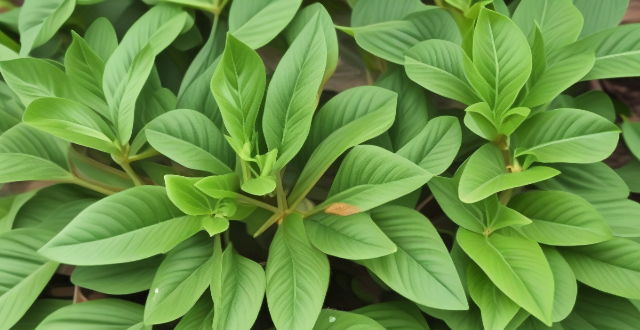
Should I use fertilizer for my indoor plants, and if so, how often ?
Fertilization is crucial for indoor plants, providing essential nutrients for growth. The need for fertilizer depends on factors like plant type, soil quality, and light exposure. Most indoor plants benefit from monthly fertilization during the growing season, while slow-growing plants may need it less frequently. Signs of nutrient deficiency can guide adjustments to the fertilization schedule. Choosing the right fertilizer involves considering its type (synthetic or organic) and NPK ratio. Proper application includes diluting the fertilizer, watering beforehand, and avoiding direct contact with leaves and stem. Balancing nutrients and care ensures healthy plant growth without the risks of over-fertilization.

What kind of soil is best for indoor plants ?
The ideal soil for indoor plants should be well-draining, lightweight, and rich in nutrients. It should contain ingredients like perlite or sand to improve drainage, be lightweight to allow better aeration and root growth, and provide essential nutrients such as nitrogen, phosphorus, and potassium. Popular soil mixes for indoor plants include potting soil mix, coco coir mix, orchid bark mix, and cactus and succulent mix. Each of these mixes caters to different types of plants and their specific needs.
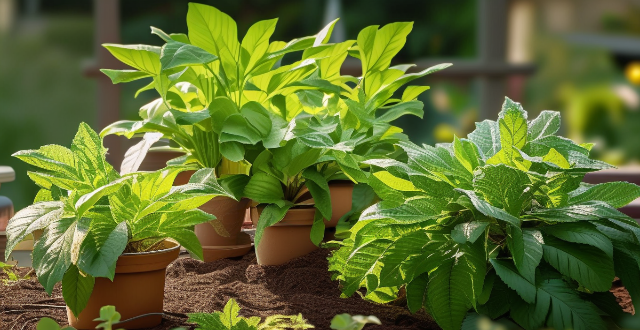
How can I revive a dying indoor plant ?
Reviving a dying indoor plant requires patience, care, and attention to detail. Here are some steps you can take to help your plant recover: Identify the problem, adjust watering schedule, provide adequate sunlight, fertilize appropriately, prune dead leaves and stems, repot if needed, monitor for pests and diseases, maintain humidity levels. By following these steps and providing regular care and attention, you can revive a dying indoor plant and help it thrive once again.
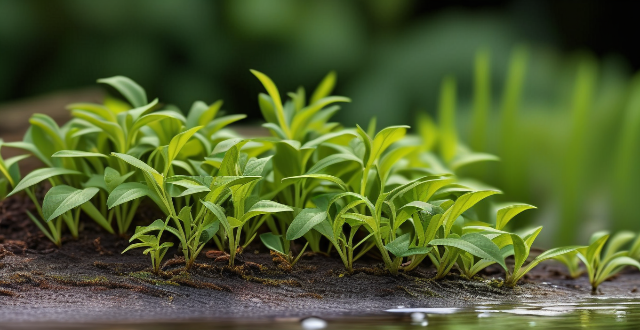
How often should I water my indoor plants ?
Indoor plants require proper watering to thrive. The frequency of watering depends on soil moisture, plant type, and environmental conditions. Most houseplants benefit from being watered every 7-14 days, while succulents and cacti can go longer between waterings. It's important to check the soil before watering and adjust your routine based on the plant's health and growth patterns. With proper care, your indoor plants will thrive and bring life to your space.

What kind of indoor games can parents play with their children to strengthen their bond ?
The article provides a list of indoor games that can help strengthen the bond between parents and children. The games include board games like Monopoly and Chess, card games such as Uno and Go Fish, puzzles and brain teasers like Sudoku and crossword puzzles, arts and crafts activities, indoor treasure hunts, and cooking/baking projects. These games not only provide entertainment but also offer opportunities for learning and quality time spent together.

What is the relationship between energy-efficient buildings and indoor air quality ?
This article explores the relationship between energy-efficient buildings and indoor air quality, highlighting both positive and negative interactions. It defines energy efficiency and indoor air quality, outlines strategies for improving air quality in energy-efficient buildings, and concludes that it is possible to achieve both goals through careful design and maintenance practices.
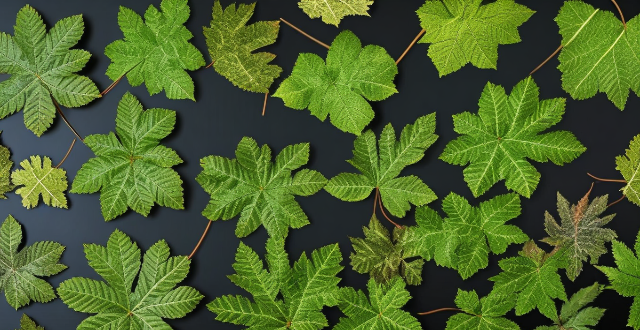
Why are the leaves of my indoor plant turning yellow ?
Yellowing leaves on indoor plants can indicate various issues, including improper watering, nutrient imbalances, unsuitable lighting, temperature stress, pest infestations, diseases, physical damage, or natural aging. Addressing these concerns involves adjusting watering habits, providing adequate light, using appropriate fertilizers, maintaining ideal temperatures, monitoring for pests and diseases, handling plants gently, and regular pruning. Understanding and responding to these factors can help restore the plant's health and prevent future leaf discoloration.

How should I spend a rainy weekend in a city ?
This text provides a guide on how to spend a rainy weekend in a city. It suggests staying indoors and enjoying the coziness of home by reading a book, watching movies or TV shows, and cooking or baking something delicious. It also recommends visiting indoor attractions like museums and art galleries, shopping malls, and indoor sports facilities. The text suggests pampering oneself with a spa day or attending a yoga or meditation class. Socializing and networking at events or meetups or visiting local cafes is another option. Lastly, it encourages embracing the rain outdoors by taking a walk or capturing the beauty of the city through photography.

Is it necessary to mist indoor plants regularly ?
Is misting indoor plants necessary? Misting can increase humidity and cleanliness, but also lead to over-watering, pests, and disease. It's beneficial for tropical plants and during dry seasons, but not always necessary. Use warm water, avoid direct sunlight, target leaves, and don't overdo it.

How do I prune my indoor plants correctly ?
Pruning indoor plants is crucial for their health, shape, and beauty. Here's a step-by-step guide on how to prune your indoor plants correctly: 1. **Assess the Plant**: Identify any dead or damaged leaves, stems, or branches and remove them first to prevent disease and insect infestations. 2. **Gather the Right Tools**: Sharp scissors or pruners, pruning shears for larger plants with thicker stems, and garden gloves to protect your hands from sharp edges and sap. 3. **Start Pruning**: Follow guidelines for pinching back, shaping and thinning, and removing dead flowers and stems. 4. **Post-Pruning Care**: Water thoroughly after pruning, apply a balanced fertilizer, ensure adequate sunlight or artificial light, and monitor for signs of stress or disease following pruning.

What is the ideal temperature for indoor plant growth ?
Indoor plants generally thrive in temperatures between 65°F to 75°F during the day and slightly cooler at night, along with proper humidity and air circulation. Maintaining these conditions helps promote healthy growth and flowering. Use a thermometer, avoid drafts, and adjust heating or cooling as needed to keep plants comfortable.

How much sunlight do indoor plants need ?
Indoor plants require sunlight for photosynthesis, but the amount needed varies by species. General guidelines include low light tolerance for plants like Peace Lily and Snake Plant, medium light requirements for Dracaena and Pothos, and high light preference for Cacti and Succulents. Key considerations involve window orientation and artificial lighting. Success tips include researching plant needs, monitoring response, and gradual adjustment to new lighting conditions.
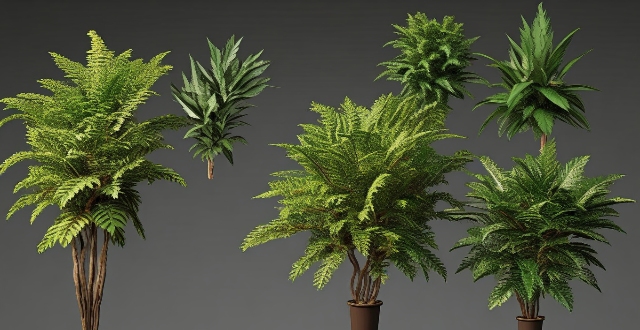
What are the best indoor plants for low-light conditions ?
The best indoor plants for low-light conditions include Pothos, Snake Plant, Philodendron, Peace Lily, and ZZ Plant. These plants are adaptable, easy to care for, and known for their ability to purify the air. They come in various sizes and shapes, making them suitable for different preferences and spaces.

How do I propagate my indoor plants ?
Propagating indoor plants is a rewarding activity that allows you to expand your collection without spending much money. Here's a step-by-step guide on how to propagate your indoor plants: 1. Choose the right plant: Some common houseplants that are easy to propagate include pothos, succulents, snake plants, and spider plants. Make sure to choose a plant that is healthy and free from pests or diseases. 2. Gather your tools: You will need some basic tools for propagation, including sharp scissors or pruners, clean pots with drainage holes, potting soil, and possibly rooting hormone (depending on the plant). 3. Choose a method of propagation: There are several methods of propagation, including stem cuttings, leaf cuttings, division, and layering. The method you choose will depend on the type of plant you have. 4. Prepare your cuttings: Using sharp scissors or pruners, make clean cuts just below a node (the point where leaves attach to the stem) on your chosen plant. Remove any lower leaves that would be below the soil line as these can rot and cause problems later on. 5. Plant your cuttings: Fill your pots with fresh potting soil making sure there are drainage holes at the bottom. Make a small hole in the soil and insert your cutting about halfway down. Water gently to settle the soil around the cutting. 6. Provide proper care: Place your newly planted cuttings in a warm bright location but out of direct sunlight Keep the soil moist but not waterlogged Avoid letting it dry out completely You may also want to cover your pot with a plastic bag or dome to create a humid environment which helps promote root growth. 7. Be patient and observe growth It can take several weeks to months for your cuttings to develop roots and new growth Once you see new leaves forming you know that your plant has successfully rooted and is ready to continue growing independently. 8. Transplant if needed Once your plant has outgrown its current pot or seems rootbound it's time to transplant it into a larger container with fresh potting soil Be gentle when handling the delicate new roots during transplantation.

What impact does air pollution have on indoor sports facilities and athletes' health ?
Impact of Air Pollution on Indoor Sports Facilities and Athletes' Health: - **On Indoor Sports Facilities**: - Reduced visibility, unpleasant odors and tastes, equipment damage, and increased energy consumption due to air pollutants. - **On Athletes' Health**: - Respiratory problems, cardiovascular disease, asthma attacks, skin irritation, fatigue and lethargy, cognitive impairment, and immune system suppression due to exposure to air pollutants.

Are there any indoor plants that are safe for pets ?
Indoor plants can be a great addition to any home, but it's important to choose ones that are safe for pets. Here are some options: 1. Spider Plant 2. Boston Fern 3. Peace Lily 4. Bamboo Palm 5. Christmas Cactus 6. Rubber Plant 7. Ponytail Palm 8. Friendship Plant 9. Parlor Palm 10. Heartleaf Philodendron
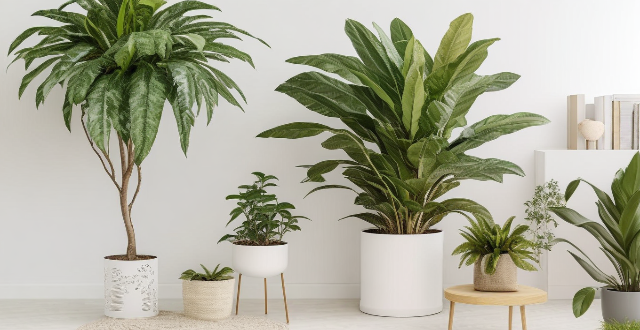
How do I choose the right pot for my indoor plants ?
Choosing the right pot for indoor plants is crucial for their growth and development. Consider factors like plant size, drainage needs, material, style, and maintenance when selecting a pot. Ensure proper drainage to prevent root rot, choose materials that suit your plant's needs and your home's style, and be prepared for the care requirements of different pot types.

How do I prevent pests from infesting my indoor plants ?
To prevent pests from infesting your indoor plants, maintain proper hygiene, optimize growing conditions, utilize natural repellents and treatments, try physical removal methods, consider biological control, and use chemical control as a last resort. Regular plant inspection is also key for early detection of potential problems.

What are some common nutrient deficiencies in women and how can they be addressed ?
The text lists common nutrient deficiencies in women, including iron, calcium, vitamin D, folate, vitamin B12, magnesium, and iodine. For each deficiency, it provides symptoms and solutions such as consuming specific foods or taking supplements.

How does climate change impact the nutritional value of crops ?
Climate change is affecting the nutritional value of crops by altering CO2 levels, temperature fluctuations, and water availability. Elevated CO2 concentrations can lead to nutrient dilution in staple crops like wheat, rice, and soybeans. Temperature extremes cause protein denaturation and interfere with enzyme function, reducing nutrient content. Water stress from drought or flooding impairs nutrient uptake and synthesis. Adaptation strategies include breeding resilient crop varieties, implementing efficient irrigation systems, and using protective structures against extreme temperatures. By addressing these challenges, it's possible to maintain crop nutrition amidst climate change impacts.

Are there any health benefits to eating a gluten-free diet even if you don't have an allergy or intolerance ?
Eating a gluten-free diet has become increasingly popular in recent years, with many people choosing to eliminate gluten from their diets for various reasons. However, the question remains: are there any health benefits to eating a gluten-free diet even if you don't have an allergy or intolerance? ### Possible Health Benefits While the scientific evidence is limited and often conflicting, some studies suggest that a gluten-free diet may offer certain health benefits, even for those without celiac disease or gluten sensitivity. Here are a few potential advantages: 1. **Improved Digestive Health** - Some individuals report fewer digestive issues when they avoid gluten, such as bloating, gas, and diarrhea. 2. **Reduced Inflammation** - Gluten can cause inflammation in some people, which may contribute to chronic diseases like heart disease and diabetes. A gluten-free diet might help reduce this inflammation. 3. **Weight Loss** - Since many gluten-free products are lower in calories and fat than their gluten-containing counterparts, switching to a gluten-free diet could potentially lead to weight loss. 4. **Better Nutrient Absorption** - For those with undiagnosed gluten sensitivity, avoiding gluten may improve nutrient absorption and overall gut health. 5. **Increased Energy Levels** - Some people claim they feel more energetic after eliminating gluten from their diets, possibly due to improved digestion and nutrient absorption. ### Potential Downsides It's important to note that a gluten-free diet isn't necessarily healthier for everyone, and it can have its drawbacks: 1. **Nutrient Deficiencies** - Gluten-free foods often lack essential nutrients found in whole grains, such as fiber, B vitamins, iron, magnesium, and selenium. 2. **Higher Cost** - Gluten-free products tend to be more expensive than their gluten-containing counterparts. 3. **Processed Foods** - Many gluten-free alternatives are highly processed and contain added sugars, fats, and sodium to improve taste and texture. 4. **Social Challenges** - Dining out or attending social events can be more difficult on a gluten-free diet due to cross-contamination risks and limited menu options. 5. **Lack of Scientific Evidence** - There isn't enough research to support the idea that a gluten-free diet provides significant health benefits for people without allergies or sensitivities. ### Conclusion While a gluten-free diet may offer some potential health benefits for individuals without celiac disease or gluten sensitivity, these benefits are not guaranteed and should be weighed against the possible downsides. It's always best to consult with a healthcare professional before making significant changes to your diet, especially if you suspect you have an allergy or intolerance.

How important is nutrition in optimizing athletic performance at a competitive level ?
Nutrition is crucial for athletic performance, providing energy, aiding recovery, and maintaining health. Key aspects include consuming carbohydrates for energy, proteins for muscle repair, staying hydrated, obtaining necessary micronutrients from a varied diet, timing nutrient intake around exercise, and personalizing nutrition plans. These practices help athletes maximize their training and competitive outcomes.
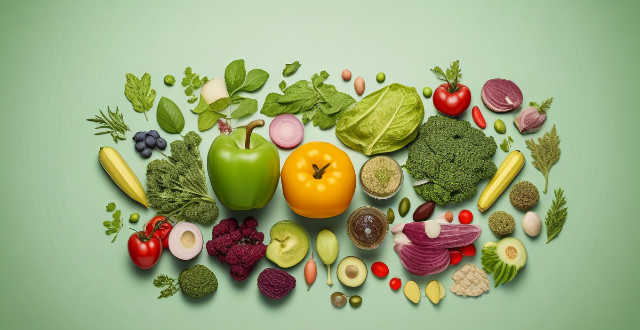
Are organic foods safer than conventionally grown foods ?
The article discusses the pros and cons of organic versus conventionally grown foods, including factors such as pesticide use, nutrient content, cost, availability, and environmental impact. While organic foods offer benefits in terms of reduced exposure to synthetic chemicals and potentially higher nutrient content, they also come with higher costs and limited availability. Conventionally grown foods are often more affordable and widely available but may contain lower levels of certain nutrients and pose potential risks from exposure to synthetic chemicals. The choice between organic and conventional foods ultimately depends on individual preferences and priorities when it comes to health, affordability, and environmental impact.

How do I ensure I'm getting enough nutrients on a vegetarian diet ?
This topic discusses the essential nutrients to watch on a vegetarian diet and provides tips for meal planning. It highlights key nutrients such as protein, iron, vitamin B12, calcium, vitamin D, and omega-3 fatty acids and suggests food sources for each. The text also emphasizes the importance of diversifying intake, considering supplementation, having regular check-ups, and working with a professional to create a balanced meal plan. Overall, it offers guidance on ensuring adequate nutrient intake while following a vegetarian diet.

How can I create a balanced fitness meal plan ?
To create a balanced fitness meal plan, start by determining your caloric needs and focus on nutrient-dense foods. Include lean protein, whole grains, fruits, vegetables, and healthy fats in your meals. Balance your macronutrients (carbs, protein, and fats) and plan your meals and snacks ahead of time to ensure you're getting the right balance of nutrients throughout the day. Stay hydrated and be mindful of portion sizes to support your health and fitness goals.

Is it necessary to take supplements for sports nutrition ?
Supplements for sports nutrition are a controversial topic, with some athletes swearing by them and others considering them unnecessary or even harmful. The necessity of taking such supplements depends on various factors including an individual's diet, training intensity, and specific goals. Sports nutrition supplements come in various forms like pills, powders, bars, and liquids, and include protein supplements, creatine, beta-alanine, caffeine, BCAAs, pre-workout formulas, and post-workout formulas. While a balanced diet can provide most of the nutrients needed for optimal athletic performance, there are certain situations where supplements may be beneficial. These include inadequate nutrient intake from food alone, high-intensity or endurance training, and specific goals or deficiencies. However, there are also potential risks associated with taking sports nutrition supplements, such as overconsumption and imbalanced nutrient intake, contamination and quality concerns, and interactions with medications or other supplements. Therefore, it is essential to choose reputable brands, check for third-party certifications whenever possible, and consult with a healthcare professional before starting any new supplement regimen. In conclusion, whether or not it is necessary to take supplements for sports nutrition depends on individual circumstances. While they can offer benefits for certain athletes and scenarios, they should not replace a well-rounded diet rich in whole foods. Before incorporating any supplements into your routine, consider your specific needs and goals and consult with a qualified healthcare professional or registered dietitian for personalized advice.

Can you recommend any air-purifying indoor plants ?
Sure, here are some air-purifying indoor plants that I recommend: # 1. Snake Plant (Sansevieria trifasciata) The Snake Plant is a popular choice for its ability to absorb toxins like formaldehyde and benzene from the air. It's also very low maintenance and can thrive in low light conditions. # 2. Spider Plant (Chlorophytum comosum) The Spider Plant is known for its long, spider-like leaves and ability to remove harmful chemicals like xylene and formaldehyde from the air. It's also easy to care for and can grow in a variety of lighting conditions. # 3. Peace Lily (Spathiphyllum wallisii) The Peace Lily is a beautiful plant that not only adds aesthetic value to your home but also helps to purify the air by removing toxins like ammonia, benzene, formaldehyde, and trichloroethylene. It prefers low to medium light and should be kept moist but not waterlogged. # 4. English Ivy (Hedera helix) English Ivy is a versatile plant that can be grown as a ground cover or trained to climb walls. It's effective at removing airborne toxins like formaldehyde, benzene, and carbon monoxide. However, it requires moderate to high light and regular watering. # 5. Bamboo Palm (Chamaedorea seifrizii) The Bamboo Palm is a tropical plant that can help filter out formaldehyde, benzene, and trichloroethylene from the air. It prefers bright, indirect light and should be kept moist but not waterlogged. # 6. Rubber Plant (Ficus elastica) The Rubber Plant is known for its large, glossy leaves and ability to remove toxins like formaldehyde from the air. It prefers bright, indirect light and should be watered when the top inch of soil is dry. # 7. Golden Pothos (Epipremnum aureum) Golden Pothos is a trailing plant that can be grown in a hanging basket or trained to climb walls. It's effective at removing toxins like formaldehyde, benzene, and xylene from the air. It prefers bright, indirect light and should be kept moist but not waterlogged. # 8. Aloe Vera (Aloe barbadensis) Aloe Vera is a succulent plant that's known for its healing properties and ability to remove formaldehyde from the air. It prefers bright, direct light and should be watered once the soil is completely dry. # 9. Boston Fern (Nephrolepis exaltata) Boston Fern is a lush, green fern that can help purify the air by removing toxins like formaldehyde and xylene. It prefers high humidity and should be kept moist but not waterlogged. # 10. Chinese Evergreen (Aglaonema modestum) Chinese Evergreen is a low-maintenance plant that can help remove toxins like benzene and formaldehyde from the air. It prefers low to medium light and should be kept moist but not waterlogged.

How can I maintain a clean and healthy living environment at home ?
Maintaining a clean and healthy living environment is crucial for family well-being. Tips include regular cleaning, proper ventilation, minimizing clutter, pest control, healthy eating habits, personal hygiene, waste management, and water conservation. These practices promote physical health, mental well-being, and overall happiness for the family.

What are some eco-friendly gift options for environmentally conscious friends ?
When it comes to finding the perfect gift for your environmentally conscious friends, there are plenty of eco-friendly options to choose from. Here are some ideas: 1. Reusable Water Bottles: Stainless Steel Water Bottles are durable, long-lasting, and can be used again and again. They come in various sizes and designs, making them a great gift option for anyone who wants to reduce their plastic waste. 2. Sustainable Clothing: Organic Cotton T-shirts are not only comfortable but also environmentally friendly. They're free from harmful chemicals and pesticides, making them a great choice for those who care about their health and the planet. 3. Reusable Shopping Bags: Fabric Tote Bags are lightweight, foldable, and can hold a lot of items. They're perfect for grocery shopping or running errands and help reduce the need for single-use plastic bags. 4. Plant-Based Candles: Soy Wax Candles are non-toxic, biodegradable, and burn cleaner than traditional candles made from paraffin wax. They come in various scents and make a thoughtful gift for anyone who loves candles. 5. Natural Beauty Products: Coconut Oil is a versatile oil that can be used as a moisturizer, hair conditioner, or even a makeup remover. It's all-natural and free from harsh chemicals, making it a great addition to any skincare routine. 6. Recycled Paper Products: Recycled Notebooks are made from recycled paper and are bound with eco-friendly materials. They're perfect for taking notes, journaling, or sketching and help reduce the demand for new paper products. 7. Solar-Powered Gadgets: Solar Chargers use solar power to charge devices like smartphones and tablets. They're portable, lightweight, and eliminate the need for disposable batteries. 8. Compost Bins: Indoor Composters make it easy to compost food scraps at home, reducing waste and creating nutrient-rich soil for plants. They're available in various sizes and styles to suit any kitchen. 9. Eco-Friendly Cleaning Products: Vinegar-Based Cleaners are effective at removing dirt and grime without leaving harmful residues behind. They're inexpensive and can be used on various surfaces throughout the home. 10. Upcycled Jewelry: Recycled Metal Jewelry is made from recycled metals like silver and gold, reducing the need for mining new materials. It's unique, stylish, and makes a great gift for anyone who loves fashion and sustainability.